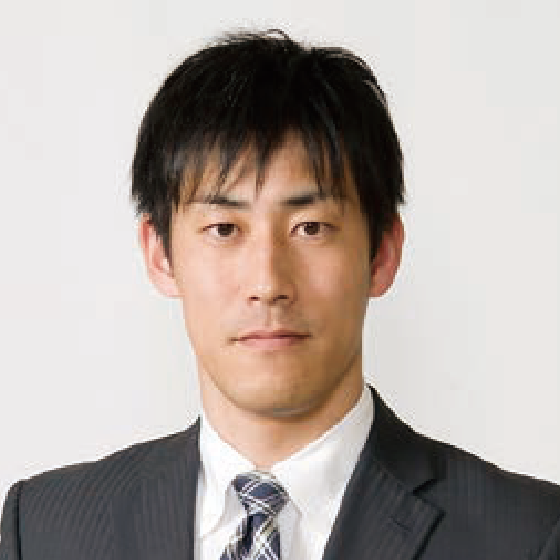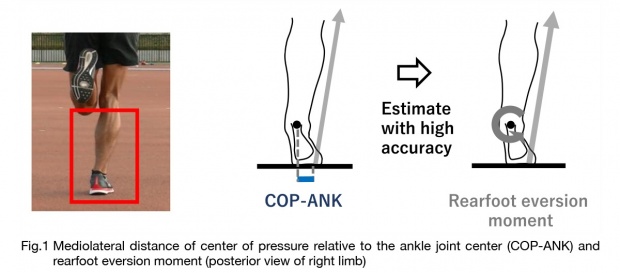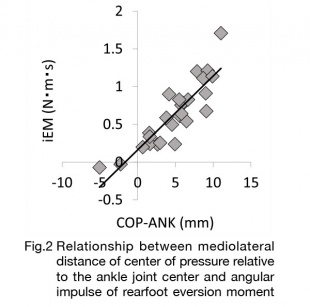- Home
- Faculty Members
- Department of Sports and Health Sciences
- Norio Tsujimoto
Faculty of Sports and Health Sciences
Department of Sports and Health Sciences
- Key words
- running, stance phase, ground reaction force, rearfoot eversion, moment lower limb injury, center of pressure

Ph.D / Associate Professor
Norio Tsujimoto
Education
Department of Educational Science, Graduate School of Education and Human Development, Nagoya University (Doctoral Program)
Professional Background
Mizuno Corporation and Hokuriku Institute of Wellness and Sports Sciences
Consultations, Lectures, and Collaborative Research Themes
Consultations and lectures on the video analysis methods for the athlete
Consultations on athlete support systems using sports medicine/science
Main research themes and their characteristics
「Mechanical factors affecting the foot eversion moment during the stance phase of running」
Running is one of the most popular outdoor activities. However, within the numerous running populations, a considerable number of overuse running injuries have been reported. One of the factors causing overuse running injuries is excessive rearfoot eversion motion. Previous research has reported that the cause of rearfoot eversion motion was the external moment due to ground reaction force (GRF) . Therefore, it can be considered that a larger external eversion moment due to GRF is the main source inducing a larger rearfoot eversion motion. Thus, understanding the primary factors that produce the external eversion moment will likely provide us useful insight to efficiently prevent injuries due to rearfoot eversion motion. The purpose of our study was to identify the primary factors that induce rearfoot external eversion moment due to GRF during the stance phase of running.
In our study, the rearfoot external eversion moment during stance phase of running was calculated by obtaining the positions of markers attached to the foot using a motion capture system. The GRF data were measured using a force platform. Participants were asked to run barefoot along the runway and across the force platform.
To clarify the factors affecting rearfoot eversion moment, data were decomposed into the four factors that produce the moment. Factors of the moment were divided into the mediolateral GRF, the height of the ankle joint centre, vertical GRF, mediolateral distance of center of pressure relative to the ankle joint center. Among these factors, we demonstrated mediolateral distance of center of pressure relative to the ankle joint center (COP-ANK) was most likely the major determinant of the rearfoot eversion moment in rearfoot and non-rearfoot strikers (Fig.1).
In further analysis, we revealed a strong, significant relationship between iEM (angular impulse of rearfoot eversion moment) and COP–ANK in all participants (n = 26; r = 0.878, R2 = 0.771, p < 0.001) (Fig.2). This analysis was also done for two groups: rearfoot strikers and non-rearfoot strikers. A strong, significant relationship was found for both rearfoot strikers (n = 15, r = 0.818, R2 = 0.669, p < 0.001) and non-rearfoot strikers (n = 11, r = 0.974, R2 = 0.948 p < 0.001).
This mechanics indicated that restraining of COP-ANK are needed to reduce the rearfoot eversion moment during the stance phase of running.These findings would be profitable for clinicians or shoe and insole manufacturers in their attempt to reduce excessive rearfoot eversion motion for preventing overuse running injuries.
Major academic publications
Tsujimoto, N., Nunome, H., and Ikegami, Y.
Primary mechanical factors contributing to foot eversion moment during the stance phase of running.
Journal of sports sciences. 2017; 35(9):898-905.
Tsujimoto, N., Nunome, H., Mizuno, T., Inoue, K., Matsui, K., Matsugi, R., Ikegami, Y.
Mechanical factors affecting the foot eversion moment during the stance phase of running in non-rearfoot strikers. Sports Biomechanics. 2019; 29:1-14.
Tsujimoto, N., Nunome, H., and Ikegami, Y.
Major factors influencing rearfoot external eversion moment during barefoot walking.
Gait and Posture. 2020; 79:189-194.


